
Sun Pharmaceutical Industries Ltd
NSE:SUNPHARMA

Sun Pharmaceutical Industries Ltd
Sun Pharmaceutical Industries Ltd. began its journey in 1983 with a vision to provide quality healthcare to billions worldwide. Originating from India, Sun Pharma has steadily emerged as a global leader in the pharmaceutical industry. The company’s strength stems from its ability to efficiently manufacture, develop, and market a wide range of generic pharmaceuticals and therapeutic formulations. With a significant footprint in over 100 countries, it is driven by a robust pipeline of drugs encompassing key therapeutic areas such as psychiatry, cardiology, neurology, and gastroenterology. A hallmark of Sun Pharma’s strategy has been its strong focus on research and development, specifically in creating affordable medicines that tackle complex medical conditions.
The company’s business model revolves around a dual strategy: the development of complex generics and innovative specialty products. This approach allows Sun Pharma to capitalize on both the high-volume, cost-efficient production of off-patent drugs and the value-driven, specialized therapy segments. By leveraging its R&D capabilities, the company explores new drug delivery systems and complex formulations, which not only ensure a steady flow of new product introductions but also enhance its competitive edge in the market. This blend of innovation and scale positions Sun Pharmaceutical Industries Ltd. as a dynamic force in the global pharmaceutical landscape, continually navigating the intricate balance of providing both profitable growth and accessible healthcare solutions.
Earnings Calls
In Q3 FY25, Sun Pharmaceuticals reported sales of INR 134,369 million, a 10.5% increase year-over-year. This growth included a notable 24.1% rise in adjusted net profit, amounting to INR 32,196 million. The company achieved EBITDA margins of 29.3%, reflecting improved cost management. Despite a 1% decline in U.S. sales, the specialty segment prospered with a 24.8% increase, totaling USD 370 million. Emerging markets contributed USD 277 million, up 10.1%. Though R&D spending is reduced to under 7% of sales, there's ongoing investment in new specialty developments, alongside a robust cash position of USD 3 billion.
Management
Dilip Shantilal Shanghvi is the founder and one of the leading figures behind Sun Pharmaceutical Industries Ltd., which is one of the largest pharmaceutical companies in India and a prominent player in the global pharmaceutical industry. Born on October 1, 1955, in Amreli, Gujarat, India, Shanghvi pursued his education at the University of Calcutta, where he earned a Bachelor of Commerce degree. In 1983, he established Sun Pharmaceutical Industries with a modest capital in Vapi, Gujarat. Under his leadership, the company initially focused on producing psychiatric drugs and gradually expanded its product range and market reach. Shanghvi's strategic vision and emphasis on specialty generics and niche markets facilitated Sun Pharma's rapid growth and its entry into highly regulated markets such as the United States. One of his significant achievements was the acquisition of Ranbaxy Laboratories in 2014, which transformed Sun Pharma into the largest pharmaceutical company in India and the fifth-largest generic drug company globally at the time. Dilip Shanghvi is known for his business acumen, strategic acquisitions, and emphasis on innovation and research and development within the pharmaceutical sector. Over the years, Shanghvi has received numerous accolades for his contributions to business and industry. He has consistently been ranked among the wealthiest individuals in India and has played a crucial role in shaping the landscape of the Indian pharmaceutical industry with his visionary leadership and entrepreneurial spirit.
Aalok Dilip Shanghvi is a prominent figure in the Indian pharmaceutical sector, primarily recognized for his association with Sun Pharmaceutical Industries Ltd., a multinational pharmaceutical company headquartered in India. As the scion of the company's founder, Dilip Shanghvi, Aalok has played a significant role in the company's operations and management. Educated at the University of Michigan, Aalok holds a degree that has helped him in understanding the business landscape more comprehensively. He has held various strategic positions within Sun Pharma, contributing to areas such as marketing, business development, and project management. His work has been instrumental in helping the company maintain its status as a leading player in the pharmaceutical industry. Apart from his involvement in Sun Pharma, Aalok has expressed interest in other business ventures and entrepreneurship, exploring opportunities outside the pharmaceutical domain as well. His role in Sun Pharma is not just seen through the lens of legacy but is marked by efforts to innovate and expand the company's global reach. Aalok Dilip Shanghvi continues to be an influential executive with a keen focus on the growth and diversification of Sun Pharma's portfolio and operations.
Davinder Singh is an executive associated with Sun Pharmaceutical Industries Ltd., one of the largest specialty generic pharmaceutical companies in the world. As of the latest update, he serves in an executive role within the company, where he has contributed to various strategic initiatives and operations. His leadership is instrumental in driving growth and maintaining Sun Pharma's status as a leader in the pharmaceutical sector. With a strong background in the industry, Davinder Singh plays a key role in steering the company towards innovation and expansion in global markets. His expertise and commitment have been pivotal in navigating the complex dynamics of the pharmaceutical landscape.
Dheeraj Prasad Sinha is an executive associated with Sun Pharmaceutical Industries Ltd., a leading global specialty generic pharmaceutical company. Mr. Sinha holds a Bachelor of Engineering degree and has played a significant role within the organization, contributing to its growth and strategic operations. He is known for his expertise in engineering, operations, and management within the pharmaceutical industry, bringing a wealth of experience to his role. Through his leadership and technical skills, he has been instrumental in driving efficiency and innovation, helping Sun Pharmaceutical maintain its competitive edge in the market.
Dr. Abhishek Sharma is a well-regarded executive within Sun Pharmaceutical Industries Ltd., one of the largest specialty generic pharmaceutical companies in the world. He holds critical responsibilities in the company, contributing significantly to its strategic and operational facets. Dr. Sharma's expertise lies in pharmaceutical sciences and business management, which he adeptly combines to drive innovation and operational excellence within the organization. With a background in both pharmacology and business administration, Dr. Sharma has played a crucial role in steering Sun Pharma's growth strategies, including research and development, global market expansion, and collaborative partnerships. His work often involves overseeing the development of new products, enhancing supply chain efficiencies, and ensuring regulatory compliance across diverse markets. Dr. Sharma is also known for his leadership in fostering a culture of continuous improvement and adaptability within the company, which has been essential for maintaining its competitive edge in a rapidly evolving industry. He is recognized for his ability to balance scientific innovation with commercial viability, ensuring that Sun Pharma continues to meet the healthcare needs of millions worldwide. His contributions to Sun Pharmaceutical Industries Ltd. reflect a commitment not only to the growth of the company but also to the broader goal of advancing global health through accessible and high-quality medications.
Kalyanasundaram Subramanian is a prominent executive in the pharmaceutical industry, known for his role at Sun Pharmaceutical Industries Ltd, one of the largest specialty generic pharmaceutical companies globally. He holds an extensive background in the pharmaceutical sector, particularly in the areas of strategic business management, operations, and development. Subramanian has held various key leadership positions within Sun Pharma, contributing significantly to the company's growth and expansion strategies. His deep understanding of the global pharmaceutical landscape has been instrumental in guiding Sun Pharma's business operations and strategic initiatives, helping the company navigate complex regulatory environments and expand its market presence internationally. Before his tenure at Sun Pharmaceutical Industries, Subramanian accumulated a wealth of experience in the pharmaceutical industry, further enhancing his expertise in managing large-scale operations and fostering innovation. His leadership style is often characterized by a focus on efficiency, innovation, and strategic foresight, driving the company toward achieving its long-term objectives in a competitive market. Subramanian's contributions to the industry are well-recognized, with a track record of successful projects and initiatives under his leadership, ensuring that Sun Pharmaceutical Industries remains at the forefront of pharmaceutical innovation and market leadership.
Suresh Kumar Rai is an accomplished executive associated with Sun Pharmaceutical Industries Ltd., one of the leading global specialty generic pharmaceutical companies. He has been part of the organization's leadership team, contributing to its growth and strategic direction. While detailed public information specifically about Mr. Rai might be limited, executives in roles like his typically oversee key operational, managerial, or strategic functions within the company, ensuring that corporate objectives align with broader industry trends and regulatory expectations. His role likely involves interacting with different departments to drive efficiency and innovation, helping Sun Pharma maintain its competitive edge in the pharmaceutical sector. If you seek specific details about his career trajectory or achievements within Sun Pharmaceutical Industries, those might be available through the company's press releases or official announcements.
Mr. Kirti Wardhaman Ganorkar is a prominent figure at Sun Pharmaceutical Industries Ltd, where he has made significant contributions to the company's growth and success. He holds the position of CEO of the India Business at Sun Pharma. Ganorkar has been with Sun Pharma for many years, during which he has played various pivotal roles that have helped shape the strategic direction of the company. With a strong background in pharmacy and management, he possesses deep industry knowledge and expertise. Ganorkar has been instrumental in overseeing and expanding Sun Pharma's business operations within India, driving initiatives that enhance market presence and operational efficiency. Throughout his career at Sun Pharma, he has leveraged his leadership skills to navigate challenges and seize opportunities in the pharmaceutical industry, ensuring that the company continues to deliver value to its stakeholders. His work has been critical in maintaining Sun Pharma's reputation as one of India’s leading pharmaceutical companies.
Abhay Gandhi is a prominent executive at Sun Pharmaceutical Industries Ltd., one of the world’s largest specialty generic pharmaceutical companies. He has been an integral part of the company for several years, contributing significantly to its operations and growth. Abhay is known for his extensive expertise in the pharmaceutical industry, particularly in the areas of sales, marketing, and strategic management. He has held various leadership positions within Sun Pharma, demonstrating a strong acumen for expanding the company’s market presence and driving its business strategies in competitive global markets. In his role, Abhay Gandhi has been instrumental in navigating the complexities of the pharmaceutical landscape, fostering innovation, and maintaining the company’s commitment to delivering high-quality and affordable medications worldwide. His leadership has played a crucial role in steering Sun Pharma through various challenges in the industry, ensuring a progressive trajectory aligned with the company's long-term vision. Abhay's contributions to Sun Pharmaceutical Industries include expanding the company’s portfolio and enhancing its operational efficiencies. His efforts reflect a deep understanding of both the business and the regulatory environments within the pharmaceutical sector, enabling the company to thrive in a rapidly changing industry.



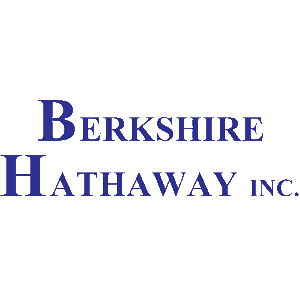


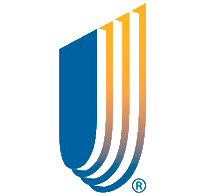
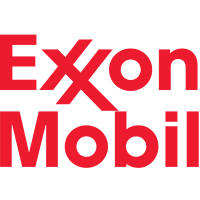
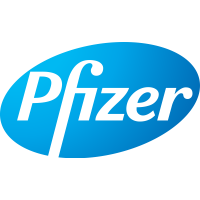





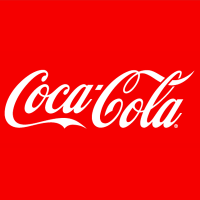



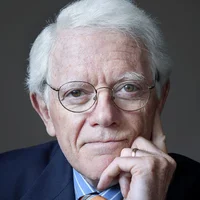

































 You don't have any saved screeners yet
You don't have any saved screeners yet
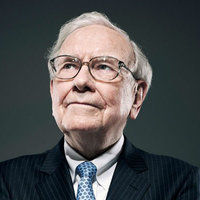
Ladies and gentlemen, good day, and welcome to Sun Pharma's Q3 FY '25 Earnings Conference Call. [Operator Instructions] Please note that this conference is being recorded.
I now hand the conference over to Dr. Abhishek Sharma, Vice President and Head of Investor Relations and Strategic Projects. Thank you, and over to you, sir.
Thank you. Good evening, and a warm welcome to our third quarter FY '25 earnings call. I'm Abhishek from the Sun Pharma Investor Relations team. We hope you've received the Q3 financials and the press release that was sent out earlier in the day. These are also available on our website. We have with us Mr. Dilip Shanghvi, Chairman and Managing Director; Mr. C.S. Muralidharan, CFO; Mr. Abhay Gandhi, CEO, North America; and Mr. Kirti Ganorkar, CEO India Business. Today, the team will provide an update on financial performance and business highlights for the quarter, pipeline updates and respond to any questions that you may have.
We will refer to the consolidated financials for management comments. The call recording and call transcript will also be put up on our website shortly. The discussion today might include certain forward-looking statements, and these must be viewed in conjunction with the risks that our business faces. You are requested to ask 2 questions in the initial round. I also request all of you to kindly send in your questions that may remain unanswered today.
I will now hand over our call to our CFO, Mr. C.S. Muralidharan.
Welcome, and thank you for joining us for this earnings call after the announcement of financial results for the third quarter FY '25. Our Q3 financials are already with you. As usual, we will look at key consolidated financials. Q3 FY '25 sales were at INR 134,369 million, an increase of 10.5% versus Q3 FY '24. Besides the underlying business growth, we also had milestone income in ROW in Q3. Ex milestones overall sales growth was 8.9%. Material cost stands at 20.4% of sales, lower than the same period last year on account of milestone income as well as better product mix, including higher specialty sales.
Staff cost stands at 19% of sales. Other expenses were at 31.2% of sales, lower year-on-year on account of lower R&D and lower selling and distribution expenses. Other expenses were also lower quarter-on-quarter in absolute terms on account of lower selling and distribution expenses. ForEx loss for the quarter was INR 1,834 million compared to a gain of INR 1,246 million same period last year. EBITDA, including other operating revenues was at INR 40,090 million for Q3, an increase of 15.3% over Q3 last year, with EBITDA margins for the quarter at 29.3% against 28.1% for Q3 FY '24 and 29.6% for Q2 FY '25.
We had an exceptional item in Q3 FY '25 amounting to INR 3,162 million, this relates to in principle agreement of a settlement with certain plaintiffs in the U.S. in the opioid litigation. Adjusted net profit, excluding exceptional items for Q3 FY '25 was INR 32,196 million, representing a growth of 24.1% over Q3 FY '24. Reported net profit for Q3 FY '25 stands at INR 29,034 million as against reported net profit of INR 25,238 million in Q3 FY '24. The effective tax rate for Q3 FY '25 was 14.7%. EPS for the quarter was INR 13.4 per share.
As of 31st December 2024, net cash was USD 3 billion at the consolidated level. Now we will discuss the 9 months performance. For the 9 months, gross sales were at INR 392,257 million, a growth of 9.1% over last year. Material cost for 9 months was at 20.7% of sales lower than 9 months last year, mainly due to product mix, including higher specialty sales.
Staff cost stands at 19.1% of sales. Other expenses were at [indiscernible] of sales higher than 9 months last year on account of higher selling and distribution expenses. ForEx loss for 9 months was INR 1,057 million compared to a gain of INR 925 million for the same period last year. EBITDA for 9 months was at INR 115,556 million, a growth of 15.7% over the 9 months last year, with resultant EBITDA margins of 29.2%.
Adjusted net profit for the 9-month period was at INR 90,953 million, up 24.3%. Reported net profit for 9 months was at INR 87,792 million compared to INR 69,218 million in the same period last year. The Board has declared an interim dividend of INR 10.50 per share for the year FY '25 against INR 8.50 per share interim dividend for the previous year.
I now hand over to Mr. Kirti who will share the performance of our India business.
Thank you, Murali. I shall take you through the performance of our India business. For Q3, the sales of formulation in India were INR 43,004 million, recording a growth of 13.8% over Q3 last year. India formulation sales accounted for 32% of total consolidated sales for the quarter.
Sun Pharma is ranked #1 and holds 8.2% market share in the over INR 2,214 billion Indian pharmaceutical market as per AIOCD AWACS MAT December 2024. Corresponding market share for the previous period was 7.8%. For the quarter ending December '24, we grew higher than IPM, and we have done well across all major represented therapy areas. A majority of Sun's growth continues to be led by volumes and new product launches versus IPM growth, which is predominantly price led.
As per SMSRC July-October '24 report, we continue to be #1 ranked company based on the prescription volume. Sun Pharma is also ranked #1 by prescription with 12 different doctor categories. For Q3 FY '25, the company launched 12 new products in India.
Now I will hand over the call to Abhay.
Thank you, Kirti. I will update on the performance highlights of our U.S. businesses. For Q3, our overall sales in the U.S. business were down by about 1% over Q3 last year, at USD 474 million. The U.S. accounted for over 30% of consolidated sales for the quarter. The growth in the specialty business offset the decline in the generics business.
We had lower sales of [indiscernible] in Q3 versus Q2, contributing to the Q-o-Q drop. The U.S. Specialty business has continued to do well. The underlying business and the prescription trend for our key growth brands, including ILUMYA, CEQUA, ODOMZO and WINLEVI remain strong. For Q3, we launched 4 generic products in the U.S.
I will now hand over the call to Mr. Shanghvi.
Thank you, Abhay. I will now provide an update on the performance highlights of our other businesses as well as give you an update on our R&D initiatives. Our revenue in emerging markets were at USD 277 million, up by 10.1% over Q3 last year. The underlying growth in constant currency terms was 14% year-on-year for Q3.
All our major markets have done well in local currency terms. Emerging markets accounted for 17% of total consolidated revenue for Q3. Formulation revenues in rest of the world were USD 259 million, higher by 21% over Q3 '24 and ROW markets accounted for approximately 16.3% of consolidated Q3 revenues. We continue to invest in building an R&D pipeline for both our generics business as well as specialty business.
The consolidated investment towards R&D for Q3 '25 stands at INR 8,450 million, 6.3% of sales. Specialty R&D accounted for 41% of our total R&D spend for the quarter. Because of delay in our clinical spends, our R&D expenditure is trending below our guidance and for the full year. We now expect FY '25 R&D spend to be less than 7% of our sales.
Moving on to update on Global Specialty. Q3 FY '25, our Global Specialty sales were up by 24.8% to reach USD 370 million. With this, I would like to leave the floor open for questions. Thank you.
[Operator Instructions] The first question is from Kunal Dhamesha from Macquarie.
Congratulations on a good set of numbers. The first question, if I look at our recent Specialty deals, these are basically emerging in new therapeutic areas, diverging from our current focus on derma, derma-onco and opthal. So could you clarify whether this shift represents a strategic change? Or these are more opportunistic in nature? How should we think about?
No. I think in our view, there are adjacencies, but at the same point of time have linkage with derma-onc and the specialty even though a little bit different from the 1 which we'll need to focus on will not require a large field force for us to create as a new team. So we will remain opportunistic, but the focus on dermatology and ophthalmology will continue.
Sure, sir. And the second question is on the specialty growth, which has been quite strong for us. And we have highlighted that ILUMYA, CEQUA, WINLEVI, and ODOMZO have been drivers. But apart from that, would you say some seasonal products like LEVULAN also helped us in this quarter? And if yes, how are the trends panning out in the ongoing quarter?
So the growth in specialty, whether I look at quarter-on-quarter, year-on-year has come from both from U.S. and ex U.S. markets with similar dollar contribution in both the markets. In ex U.S., some inventory buildup were with the partner this quarter. I'll now request Abhay to give more color on the U.S.
I think you said it rightly, there is a seasonal impact in Q3, which is typically our strongest quarter. I think if you look at it on an annual basis, the underlying business will continue to do well.
Next question is from Shashank Krishnakumar from Emkay Global.
My first 1 was on the Antibe acquisition. I just wanted to check. I think the company's lead drug was placed under a clinical hold sometime in March last year. So has that hold been subsequently been lifted by the FDA?
No, I think FDA is expecting us to do some further studies and submit to them for them to evaluate the lift of clinical wood. So we believe that this is an interesting asset, which then can help us not only in the U.S., but also in the current global environment where for treatment of pain opiates are avoided. So it's a good opportunity.
Got it. My second question was on the ex Taro ex REVLIMID generic business. So while I think you alluded to the REVLIMID decline Q-o-Q, but has there also been a meaningful decline sequentially in the ex Taro ex REVLIMID piece as well?
While Abhay will answer this question, we don't talk about Taro separately Shashank.
Yes. Sir, just looking for some qualitative comments.
Yes, sure, sure, sure. Let Abhay answer the question.
Ex REVLIMID the decline is very, very marginal.
Next question is from Bino Pathiparampil from Elara Capital. Please go ahead. Bino Pathiparampil, you may go ahead with your question.
Let's move on. Bino can rejoin.
Yes. My first question is on LEQSELVI. Any update on the litigation, what's happening and what is our expected launch time line?
So I think we expect the, what you call, overall arguments by sometimes -- to begin sometimes in April. And then post that, we'll await the judgment.
Okay. And even if the judgment is against us, the December launch timeline stays intact. Is it?
No, I think it all depends on what judgment is because we -- if the -- let's say, the judgment is to validate the existing judgment, and we can't launch till the time we get a more favorable judgment.
No, I asked because in an earlier call, you had mentioned that December that patent under question is expiring, so you could launch after that.
No, I think that is the what you call validity of the patent. So in case of my understanding is that this patent is valid till December of '26. So in case if the judgment is what you call not in our favor. And if we can't get a final judgment earlier than that, then we have to wait till December '26. That's what was my statement.
Understood. Understood. Second question on your depreciation and amortization amount. The amount has not grown much year last year also and this year also for 9 months, it's actually a little below last year's run rate. And if I look at your stand-alone depreciation amortization, which has actually substantially come down Y-o-Y as well. So could you let us -- could you make us understand what's happening with that?
So as far as consol depreciation is concerned, there are some assets getting capitalized. Some assets are fully already depreciated. That's 1 of the reasons you see the fluctuation in the depreciation.
Okay. So the consol is likely to stay like this, not increase significantly unless we add some major assets in the coming years?
Yes. Unless we -- as capitalization progresses, depreciation will also increase.
Okay. And the stand-alone depreciation and amortization has come down significantly Q-o-Q, as well as for 9 months. It's from almost INR 400 crores to INR 300 crores.
I think there are many entities which comes into the consolidated numbers. It will be [indiscernible] look at the consolidated depreciation rather than standalone.
Next question is from Neha Manpuria from Bank of America.
My first question is on the India business. We continue to see higher than industry growth for quite some time for Sun Pharma. One, where are we on MR productivity to sustain this rate of growth, do we need to add more MRs to maintain this growth. And is this all from the branded business or some of this is also because [indiscernible] trade generics or OTC expansion? Just wanted to get some color on the 14% growth.
I think as we have said in the past, a majority of our business is a branded generic business. The trade business contribution is almost negligible to our business. So all the growth, what you are seeing, is coming from a branded generic business. And in terms of second question, if I understand correctly, you are asking about the field force. So we have already told in March '24, our total field force was 14,000 people on the ground. Yes.
And any plans to expand that, sir?
So at the end of the year, that is -- after quarter 4, we will let you know about our expansion plans, yes.
Okay. Got it. My second question is on R&D. Mr. Shanghvi, you mentioned that there's been delay in clinical trials because of which we are lowering our guidance. And that's been through the year, we've seen that guidance being lower. What are the key reasons for the delay in the trials? And does this delay -- because I don't see any delay in the data readouts for the pipeline that we -- the milestone that we usually give out. So just wondering as to is there some churn in the pipeline, what is this delay which is leading to lower R&D spend?
No, I think it's taken us a little bit longer to finalize the protocols. And then we are waiting for the final bids as well as approval so that the studies can start.
In that case, would there be a risk to some of these milestones that we have mentioned, given there have been a few quarters of delay?
The milestones are if we have to pay out. No, I think what we are now talking to the CRO is that how do we find a way to accelerate the study by both increasing the number of study sites as well as the number of countries in which we will do the study.
Next question is from Anubhav Agarwal from UBS. Please go ahead.
First, a clarity on what Murali sir talked about. One, on the specialty side, when you said that sequentially, half has come from ex U.S. and half has come from U.S. Is that excluding licensing income, milestone income, so let's say, is that current on $286 million going to $325 million that has come half in the U.S., non-U.S. Or you're talking about $286 million going to $370 million?
It's roughly half ex of milestone income, roughly.
Okay. So we had a $40 million increase. So it's $20 million, $20 million, roughly. That's what you mean, right?
That's right.
Okay. Second question for Dilip bhai is you made a comment that on the Canada asset, which is in the pain and inflammation space, you may look at it because it doesn't require a large field force. Is this because it's a hospital product? And would that mean that you will be looking at -- willing to look at more hospital products or is this an exception?
No. We believe that if approved, this is a product that we can market not only in the U.S. but also in emerging markets where pain continues to be an important component of business, and we have field force which can handle these kind of products.
You mean you already have existing field force in EMs for this?
Correct. We have -- this field force already visits the doctors. So I think it's both attractiveness of the product for the regulated as well as in emerging markets.
But for this product, largely the like what will be rough split? Is it like hospital usage will be like 70%? Or is it 50%, 50%? What would be split?
Yes. No, I think what we are doing is we are trying to focus on, first of all, removing the clinical hold and then identify the set of studies that will help us get to market the fastest. Most likely, what you're saying is what's going to happen is that the initial developed indication will be hospital indications.
Okay. And just if I can ask 1 more question or if I can join. One comment I wanted, Dilip bhai, from you is that biosimilars now in the U.S. is increasingly moving towards interchangeability now, would you be interested now in looking at the space or it's still a no, no for you?
Every quarter, we come back to this question. Hopefully, at some point, we'll take a decision internally. I'm not talking about investor calls, but internally. I think for us, the question is where do we allocate the R&D spend because we have a finite amount of money that we can invest in R&D. So specialty, generics, and then we can also invest in creating a biosimilar pipeline.
Next question is from Bino Pathiparampil from Elara Capital.
Thanks for taking my second question. It's about this milestone income in specialty. So last quarter -- last year also in 3Q, you had this income. So is this something that we can expect every year going forward depending on the extent of sales?
No, I think these are all achievement of certain sales milestones. So linked with the achievement of sales milestones. So I think it's all a function of how well the product continues to do well and whether it touches the next milestone or not.
Okay. So nothing seasonal like in 3Q, it comes? .
No, no, no.
Okay. Okay. And Dilip bhai, 1 request if you may consider. Since you have become a very large specialty company now, all the large global specialty companies do give out the sales of individual products, at least the big ones. So it would be great if you can consider that.
No, I think thank you for, first of all, considering us to be large specialty company, because that's something which we don't consider. But because a large part of our business currently still continues to be the branded generic and generic business. But I think we will -- our focus is to help investors understand both company's current performance and expected future performance in such a way that it also does not create unnecessary pressure on the company and the management.
At the same time, investors have a visibility of our future trajectory. So if there is a need for us to relook at something, we will clearly relook at. So thank you.
Next question is from Surya Narayan Patra from PhillipCapital.
Sir, in the opening remarks about the India business, you have talked about the lower distribution cost during this quarter or kind of a lowest distribution cost during the quarter. What is the reason for that? And also extended point on the India, you mentioned that the outperformance in the domestic growth against the IPM has been consistent, and that is largely driven by the new launches rather than the price-led rise in the IPM. So given that, is it fair to believe that this outperformance likely to continue for next few quarters since it is like new launch date?
I think what I said is the growth is coming from volume and new products, both are contributing into the growth compared to IPM where the growth is mostly price-led that is what is -- I said. So for future, it's difficult to predict, but our endeavor is always to grow higher than the market and try to gain market share, yes.
Okay. And regards the lower distribution cost angle if can address sir?
Abhay, you want to take that one.
I think the question was on distribution costs for [indiscernible].
This opening commentary was indicating about lower distribution costs in this current quarter. So it would be a kind of a combined cost?
No, it's primarily on account of lower S&D expenses in the U.S. Last quarter, if you recall, we had incurred some prelaunch expenses on LEQSELVI which have kind of minimized now.
Okay, okay. My second question was about the change in the U.S. government and the kind of initiatives that has been talked about, whether restricting about the direct-to-market initiatives or spends by specialty companies. That is one. And also the tariffs for what it has been loosely talked about against anything that is imported into India -- into U.S. So on those 2 aspects, what would be the stance of us? And how should we think those impacting us?
Mr. Patra, you have characterized this far better than I could have, it has been vaguely talked about as of now. So we do not know what will be the final shape. You would also be aware that right now, there are confirmatory hearings on certain key appointees, which hasn't really fructified. The new appointees have not yet taken over their respective functions. So till we actually know certainly what are the actions being taken, difficult for us to plan in advance.
Sure. Okay. Just 1 more point, Dilip bhai, about the consumer health business. See in fact having created branded business across the geographies is strongly the consumer business, which has been a kind of old initiatives first. But it has been kind of a 1 not been highlighted the way it has been highlighted by other peers. So what is the current size? And what is the outlook that you are having? And how progressively or at what growth rate it is kind of moving on. If you can give some sense? And can it be a kind of a contributor to the overall growth of Sun Pharma going ahead.
So I think you have a visibility of our India consumer business. What I think you don't have visibility for and we don't also highlight is almost $200 million worth of consumer business that we have in our emerging market business, which is also OTC kind of products. So it continues to be an important component of our company and growth.
Only thing is that since we handle this business more or less the same way like we handle the prescription business, we are not differentiating and sharing the numbers separately. But it continues to be an important component of our growth.
The next question is from Kunal Dhamesha from Macquarie.
Can you please show some more light on the inventory buildout that we had suggested for the 1 of the specialty products at our partner end? I am under the impression that whatever we do ex U.S. are generally through partner and we just received royalty in our revenue.
We also capture the product sales and the product sales are lumpy.
This is the inventory buildout that we talked about.
As a partner. Yes. So if partner buys something then before he -- so every time he buys a reasonably large amount, so he may not buy in the next quarter. That's why we are saying it's lumpy.
So basically when he buys, it triggers royalty payment.
Royalty has to be paid independent when he sells.
So let's say when Almirall buys, basically, does it...
Kunal, I will get top line and they will give us monthly statement based on which the royalty is paid. So there may be a different arrangement with different partners.
Sure. And the second question, if I look at our specialty R&D now as a percentage of specialty revenue, excluding milestones, it's coming out to be roughly around 12% of the specialty revenue, right? So generally, what you're seeing with the large innovator company is typically around 16%, 17% range. So how should we think about this going forward? Not just 1 quarter, but let's say, over the next 2, 3 years, how are we thinking about it?
I mean that's the focus. And if we would have achieved our guidance, then that is what it would have reached.
Okay, sure. And sir, last 1 on the capital deployment, which we have a strong cash balance now. And I'm sure that we have been evaluating a lot of deals. But has there been any let's say, change in the end market valuations that you see it has become more attractive, less attractive, the number of deals that we churn or we look at per year, has that increased, decreased? How should we think that?
No, I think we are open for looking at. I mean, we constantly look at any value-add options. Anything which is strategic and we think we can it will add value to our existing business and is accretive is something that we seriously consider.
But would it be more like specialty or you would also look at India business as well if you find that attractive or something in emerging markets?
No, I think we generally priority is to focus on specialty products.
[Operator Instructions] The next question is from Krish Mehta from Enam Holdings. Please go ahead.
Congratulations on a great set of numbers. Dilip bhai, I just wanted to check with you on the Japanese portfolio and how we're doing, seeing that the mix of specialty has become almost 50-50 with U.S. and non-U.S. If you could just give some color on the specialty business in Japan as well as on the Novartis portfolio that we acquired almost over a decade ago now. How has that progressed in Japan?
No, first of all, we don't split the specialty in terms of giving numbers. But our focus is on growing the specialty business in Japan because the generic business has become very challenging in terms of pricing and overall attractiveness. So maybe, Kirti, you can respond.
Yes. Generic business, what you are referring to, Novartis, long-listed brands, there is a price pressure. Every year, there is a price decrease ranging from 5% to 7%, depending on the product. So our focus is to continue to grow ILUMYA business. ILUMYA [indiscernible] the future pipeline also.
That's very helpful. And my second question was on the tax rate. If you could just provide some color on how you see this stabilizing as we also kind of the sunset benefits in some geographies. So how do you see a stable tax rate going forward?
So we have said in the past that the tax rate should be seen on annualized basis. In the last call, we also said that on our facility, the sunset clause was there, and it will inch up as we move a couple of quarters ahead.
Next question is from Vivek Agarwal from Citigroup.
Abhay, my question is related to compliance issues. So how we should look at this year 2025 as we have few facilities down with the FDA. So what is preparedness of the company? And are you expecting any facility going for the reinspection? So I'm just trying to assess that what is the way forward to revise this business, which is, I think, down at historical lows at this point of time?
Yes, the idea is to, what we call, bring these facilities back in compliance, because we will require new products to strengthen our ability to grow the business.
Okay. But are we expecting any of the facility to undergo inspection this year? Or have you missed any kind of material changes that can improve the company's confidence level that we maybe able to clear these facilities from hereon?
I mean, that's the hope, and that's what we are all working for. Just that we will -- we've invited the agency to inspect Halol, but then when to inspect is a decision that they take. So...
Understood. And what about the other facilities in Mohali, Dadra? Have we invited or are we in the process of inviting the FDA?
No, I think we have to first fulfill our CAPAs and whatever commitments we have given so that they can -- when they reinspect, they can assess that whether we've met all guidance or not.
Next question is from Damayanti Kerai from HSBC. Please go ahead.
My question is regarding your R&D spend. So you have trimmed R&D outlook for this fiscal due to the reasons discussed. But how should we look at R&D number as you expedite some of the clinical trials and go for more sites?
Yes. No, I think now this will get covered in the next year's R&D guidance.
Okay. So whatever didn't get covered this fiscal, that will move to coming years?
I mean we will guide for whatever that you should estimate.
Okay. My second question is actually a clarification. So again, split of specialty sales between U.S., non-U.S., you mentioned roughly half, half. So can you clarify this bit because I assume that U.S. used to be the larger contributor for specialty sales. So any like other markets which have seen significant pickup, that's why now we are seeing equal numbers coming?
No, no. It's only growth that we have said Damayanti for this quarter, specifically, that the growth came from -- the dollar contribution of growth came from both U.S. and ex U.S.
Okay, but...
Nothing to do with base business. Base business where it is...
I think this point, Abhishek, glad you clarified because 2, 3 others had the same, I think, confusion.
Okay. So -- but should we assume that U.S. is the largest contributor in terms of absolute dollar number?
Yes.
Next question is from Anubhav Agarwal from UBS. Please go ahead.
Yes. A couple of questions. One is on India business. The 14% growth we have for the quarter and for 9 months also, so just trying to understand this 14% number. When we look at the largest therapies for us like cardiac, diabetes, CNS, et cetera, IQVIA shows about 10%, 11%. I'm just trying to understand your numbers that is it higher growth for us, 14% coming from some of the newer therapies which are growing very fast or this 14% is very similar number across the spaces, like IQVIA is really behind and we are like cardiac, everywhere we are around 13%, 14%.
As I said, all therapies are doing well for us. So this growth is not coming specific from specific therapy areas. Being said that, there are therapy areas, which will grow faster than the other. But overall, if I look at from April to December 9 months sales is across the therapy areas.
And in the IQVIA, we are understated. Our internal growth versus the IQVIA growth what you see there is a delta of a couple of percentage.
Okay. That's helpful. The second question is on the specialty data only. So the ex U.S. portion that you're talking about, you guys mentioned that there could be element of one-off there. Just trying to understand a feel there on 2 points. One, is this largely one-off, the data that you've seen here, let's say, on that number of, let's say, 40 is the delta, 20 is ex U.S. increase. So let's say 20, large part of 20 is one-off? That's 1 part of the question. Second is, which geography are we talking about? Are we talking about this in Europe, in China, in Japan, roughly -- rough idea will be useful.
So Anubhav, it's very difficult to such a very detailed breakup in terms of that. However, I'd like to say that there are many factors and some have bunched up in this quarter. However, I would say that including specialty, our annual revenue growth guidance reflects all this.
Next question is from Akash Dobhada from Motilal Oswal Financial Services. Please go ahead.
I have just 1 question. Can I get some color on other operating income, why it has increased so much sequentially?
So in the Q3, there was some recognition of certain grants as compared to the previous quarter. .
Next question is from Vishal from Systematix.
I have a question on semaglutide. We can see that you have a para IV in Canada for Ozempic and Wegovy. So just wanted to understand whether you also have filed an A&D in Canada market because that's opening up earlier around 2026.
I mean we don't give product-specific future information. But what you're saying is correct in public information, people can see that we filed para IV to semaglutide in the U.S.
All right. So whether you would have also filed for Canada, would that make sense to assume that?
No, don't assume anything. We will give you guidance about whatever that we are likely to grow by in next year because we will factor everything, including potential approvals and potential price erosion and everything and give you overall guidance.
And second 1 on in Nidlegy in melanoma. So it's being filed for adjuvant -- neoadjuvant setting. I just wanted to understand whether there is an -- whether there is any approved asset in the same setting? Or would this be the first 1 in that?
I think you are asking a question which is beyond my capability. I'll need to come back with proper information. Only thing which I know is that when we did the assessment, and we looked at the data, we saw that our data essentially reflects a product which is likely to be significantly differentiated over the currently marketed product.
Sir, since we don't have a presence in Europe. So how do we kind of go about this? Will we kind of...
No, no, no. We have significant business for ODOMZO in Europe and the same customers will potentially prescribe this.
Okay. And any way you can quantify the PLI benefits that we get annually?
No, we do not give any specific amount on any grants or incentives.
Yes. But I think there is a, what you call, maximum what you can get is INR 200 crores.
Maximum is INR 200 crores as per the scheme?
As per the scheme, correct.
For a single product or...
No, no, for the company.
For the company. I hope it was a single product.
Next question is from Madhav from Fidelity. Please go ahead.
Just a basic one, did you split the India growth into volume, price and new launches? If you could just help with that. And I think it's a volume-led growth. If you could just give us some sense, what's helping us grow sort of ahead of market and volumes, which is quite positive given a lot of the peers have been struggling.
Sure. As I said, we are growing both by volume and new products, yes, that's...
And also, there would be a price component.
Price component, yes.
Okay. Could you give us how much of that 14% is volume-led growth?
So roughly 50% to 55% is the new product and volume growth and rest will be price related. Just to give you some idea about the growth here.
Okay. Got it. And even I think the EM market has grown quite well in dollar terms. So just any sense sir? I mean, is it any specific tenders which have helped us? Or are we adding new markets? If you could give us some sense in terms of what's driving very good scale up there as well?
I mean, generally, we don't focus on tender business. And if there is a specific tender business, then we clearly state because we don't want people to start kind of modeling continued business for a business which is onetime. So no, I think generally, markets have done well.
Next question is from Saion from Nomura.
Dilip bhai, just on EM. Typically, in the previous quarter, you had talked about specific markets. So is there any specific market or markets you would like to call, which is supporting growth or is this across all your major markets?
Yes. I think we've, in the past also indicated that the large markets that we are present in are Brazil, Romania, New Mexico, Russia.
Okay, okay. And just 1 more on the domestic business. Over the last few years, particularly post the pandemic, the field force, almost 40% expansion has happened. So if you can give some color in terms of how a geography or doctor coverage has improved? And is that something which is aiding the growth? And how should we think about because at 1 level, you have to scale and the base is very large. So is that an advantage for you to grow ahead of the market? Or it kind of puts more pressure, how should we think about it?
So broadly, what I said in the past also is like expansion as well as decluttering of portfolio has helped us to grow the business. So for future, maybe we will guide you at the end of the next quarter, what are our plans.
But can you suggest if there is a significant geographic footprint expansion like going more deeper into Tier 2, Tier 3 cities or which is this 40-odd percent expansion in field force, is that something which has contributed meaningfully to growth?
These are all expansion based on the need and the potential of the market. It's not like significantly we're going into different tiers.
Next question is from Vivek Agrawal from Citigroup.
Sir, if you look at the ROW business, so the last 4 quarters, the business is not growing. So earlier, you have alluded that there are some pricing-related issues, et cetera. So are these over or when do you expect this business to start growing?
No, I don't think we give specific guidance to markets. What we do is we give you an overall guidance as a company that what we wish to achieve.
Yes, understood. But in one of the quarters, actually, you highlighted that in 1 market, especially in Japan, right, because of the pricing, there is some kind of slowdown. So are these issues are over? Or is it there in the base? So [indiscernible].
Yes, we were not yet fully in the base. I think we had said in last quarter that it will take a couple of quarters for it to flow through the base in time.
And just last -- 1 last question. You highlighted that in this quarter, there is some kind of inventory build out, right? So is it fair to assume that the next quarter sales of specialty should be lower from the current quarter, excluding milestone? .
Yes, yes, you can assume that.
The next question is from Surya Narayan Patra from PhillipCapital.
Just a clarification about the same ROW. This quarter, we have seen a kind of mark hit from the previous trend. Is it comprising of the -- what is this driving, whether it is the milestone is hitting here in this line item or what? And also if you can give some update about ILUMYA in the China market, how is progressing?
So in the ROW for the quarter, you are right, the milestone is baked in that ROW number.
Okay. And regards the ILUMYA tree in China, any update there, sir?
No, the product is doing quite well is what I was told. I have no specific further update.
That was the last question in queue. I would now like to hand the conference back to Dr. Abhishek Sharma for closing comments.
Thanks, everyone, for dialing in at this late hour and listening to the management. If you have any remaining questions, you can reach out to the Investor Relations team. We are happy to take your questions. Thank you, and have a good weekend.
Thank you very much. On behalf of Sun Pharma, that concludes this conference. Thank you for joining us. Ladies and gentlemen, you may now disconnect your lines.